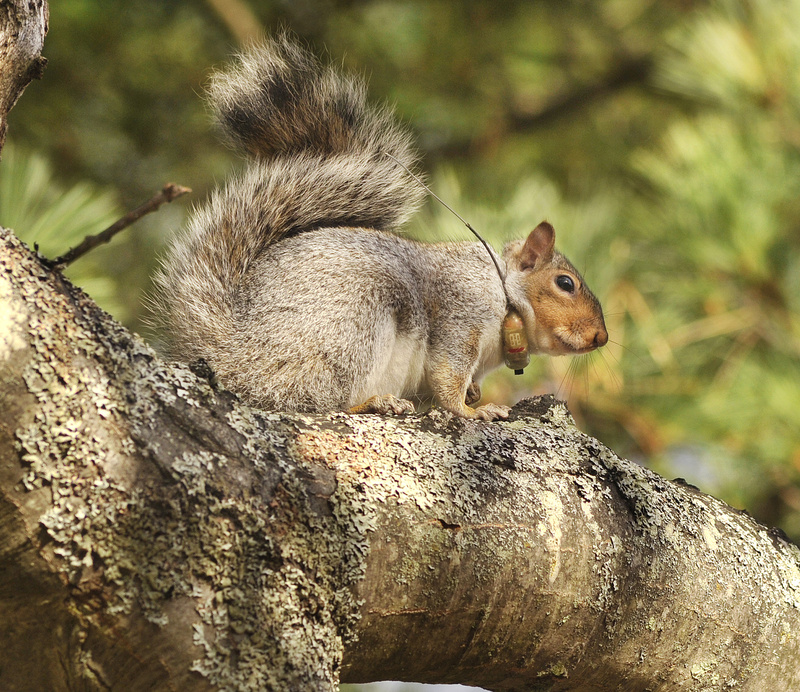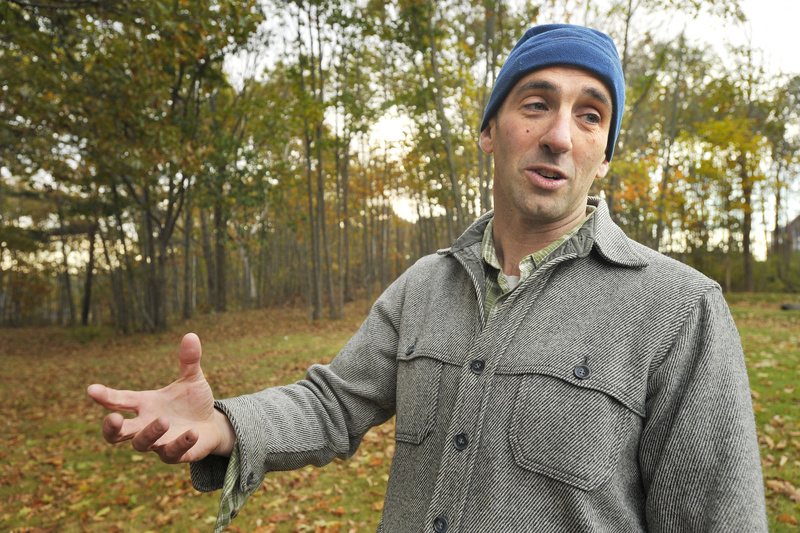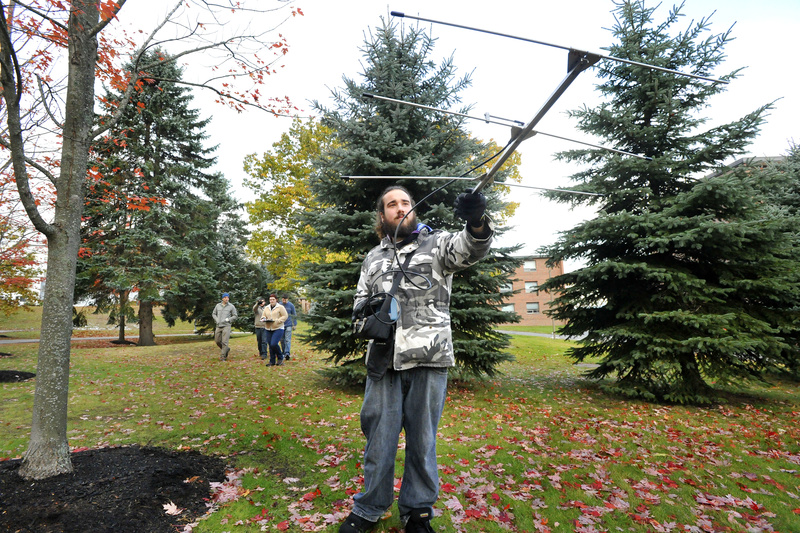BIDDEFORD — Rocky and Bullwinkle would be so impressed.
For the past two years students at the University of New England have been following, observing, pondering and literally stalking gray squirrels – and this fall they are trying to get the surrounding community involved in an interactive website.
Two years ago with a $2,000 grant a study began at the university tracking squirrels with ear tags and radio collars. It’s a fun way for undergraduate students to get real-life biology field work experience, said Assistant Professor Noah Perlut, who started the study.
But the study also could lend itself to teaching all of us more about squirrels.
“There is surprisingly little known about gray squirrels,” Perlut said.
The body size and range and the life span of gray squirrels are all unknown, Perlut said. He’d love for his students to be the first to figure out the average- age of these critters.
“That’s the goal,” Perlut said. “And to appreciate the common species, it’s the simple joy of seeing a wild animal, it’s a part of people’s lives.”
Gray squirrels are native to Maine, but there have been no studies done on the species by the state, said Maine state small mammal biologist John DePue.
“We’ve collected data here in Maine on raccoons, fishers and deer … But with the limited resources we focus resources on the species that have questions that are pertinent, that need to be answered immediately,” DePue said.
In the UNE study, the students gather all the squirrel data.
They set four traps to catch and collar the squirrels, and have the potential to radio collar eight squirrels, although at the moment there are four they are tracking. Sometimes the squirrels fall prey to predation – when they become food for a fox or coyote. A necropsy last winter showed one squirrel found deep in a tree cavity died of starvation.
But on any given day, study squirrels can be seen racing and dancing about campus, sitting and grooming in big oak trees, with collars hanging from the tiny necks looking like a part of squirrel wardrobe.
“We can follow them 24 hours a day,” Perlut said with a smile.
The students are up early in the morning marching around campus with a large radio receiver. They run the website that plots the squirrel range and they monitor the small metal traps, which they leave only an hour at a time to minimize squirrel discomfort.
Danielle Behn, a junior studying environmental science, has gone out three days a week for the past two months. She never gets tired of tracking squirrels, and said neither do the many curious observers.
“People make jokes if we’re carrying a TV, but when we say we’re looking for squirrels, they stop and ask,” Behn said. “We get asked two to three times when we’re out. We explain that we’re squirrologists.”
Before Tuesday Perlut thought 40 acres was the largest range of one of the resident squirrels, but the work Behn and senior Cory French did tracking Squirrel No. 274 proved the resilient critters roam even farther. The two students tracked the squirrel through a huge wooded area up a residential road to a bird feeder.
The novice biologists never imagined a common every-day critter that we drive past, under – and sometimes over – could be so fascinating and draw so much dedication.
The students now are recruiting their neighbors to report squirrels with colored ear tags on the website.
Maine’s simple squirrel study, now two years old, has only just begun.
“There’s no end to it,” Perlut said.
Staff Writer Deirdre Fleming can be contacted at 791-6452 or at: dfleming@pressherald.com
Twitter: Flemingpph
Send questions/comments to the editors.






Success. Please wait for the page to reload. If the page does not reload within 5 seconds, please refresh the page.
Enter your email and password to access comments.
Hi, to comment on stories you must . This profile is in addition to your subscription and website login.
Already have a commenting profile? .
Invalid username/password.
Please check your email to confirm and complete your registration.
Only subscribers are eligible to post comments. Please subscribe or login first for digital access. Here’s why.
Use the form below to reset your password. When you've submitted your account email, we will send an email with a reset code.